Pipeline flow assurance is an essential part of operational efficiency and safety. Production blockages and pressure loss can be caused by various debris, including scale, paraffin, asphaltenes, and hydrates. All of These sources lead to negative impacts like production loss, downtime, costly repairs, and other maintenance issues.
Chemical injection is currently the industry standard for ensuring uninterrupted flow. However, injected fluids carry a significant additional cost, bring complexities during operations, and cannot be used effectively in certain situations. DragX mitigates flow assurance issues by creating an ultra-slick inner diameter that eliminates the build-up or adhesion of debris such as paraffin, scaling, hydrates, and asphaltenes within the pipeline.
DragX has been rigorously tested with respected operators and consistently demonstrates high flow assurance performance in varying deployment conditions. Performance in crude oil lines with asphaltene presence was specifically studied at the Colorado School of Mines (CSM) Center for Hydrate Research, in conjunction with the NETL, for anti-hydrate plugging performance.
The DragX nanotechnology was proven to vastly outperform previous hydrocarbon pipeline coating solutions, mitigating or preventing the agglomeration of debris. DragX demonstrated that it repels asphaltenes in crude oil deposition at a far better rate than other epoxies and traditional treatments. DragX’s water-and oil-repelling nanotechnology delivers significant cost savings associated with inhibitors or chemical injection, pumping power, and cleaning.

Asphaltene
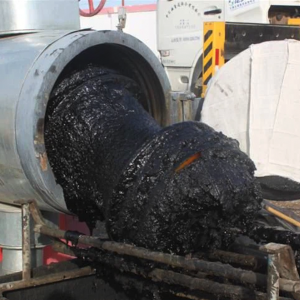
Paraffin
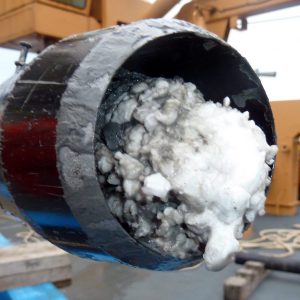
Hydrates
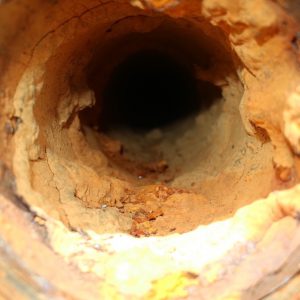
Scale
Static Asphaltene Deposit Demo
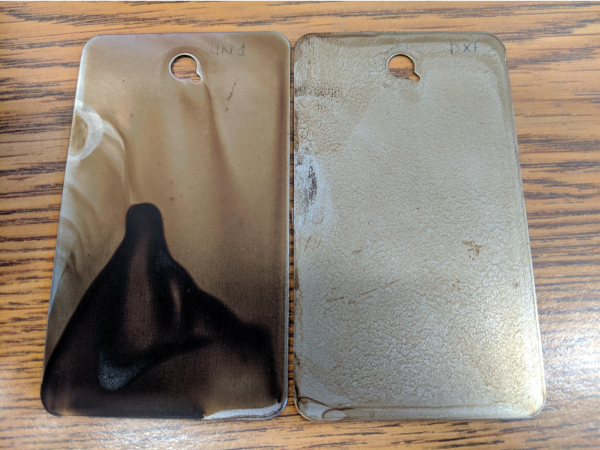
ASPHALTENES
Asphaltenes are complex mixtures of polyaromatic compounds with heteroatomic species such as nitrogen, oxygen, sulphur, and organometallics such as iron, nickel, and vanadium. Changes in crude oil composition, pressure, and temperature conditions can cause Asphaltenes to precipitate out of petroleum fluids under a variety of relatively common conditions. As petroleum fluids are extracted from reservoirs, depressurization causes this precipitation, ultimately resulting in formation damage and partial/complete plugging of the pipeline. Lengthy and costly shutdowns are required to restore full flow capability to the operation, and deposits can often only be removed by injecting of large amounts of aromatic solvents; an incredibly costly remediation due to the amount of chemicals required.
While pipeline operators continue to seek technologies that control deposition and provide flow assurance, in-situ-applied epoxy coatings have been an industry last resort. In testing at CSM, DragX was shown that it can be a frontline solution. DragX vastly outperformed other tested treatments and the control (uncoated) pipe in repulsion of the asphaltenes in crude oil.
DragX nanotechnology was proven to outperform previous hydrocarbon pipeline coating solutions and demonstrated that it repelled asphaltene deposition at a far better rate than other epoxy treatments.
Quantification of Asphaltene Deposits on Various Coupons
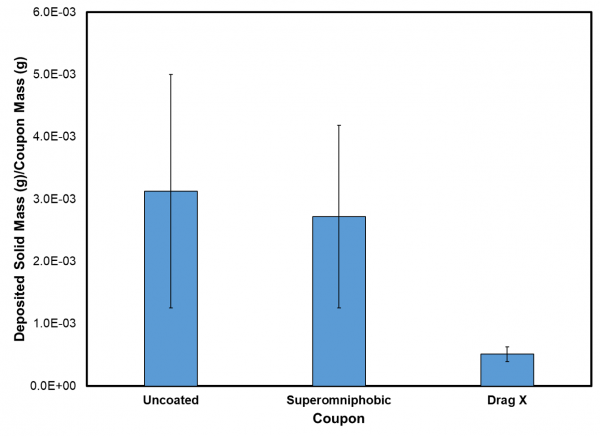

HYDRATES
DragX was specifically studied at the Colorado School of Mines (CSM) Center for Hydrate Research, in conjunction with the NETL, for anti-hydrate plugging performance.
Gas hydrates are ice-like crystalline structures formed via the interaction between oil, gas, and water under high pressures and low temperatures. The natural conditions necessary for hydrate crystallization frequently occur in petroleum pipelines and cause significant disruption to operations. After hydrate particles nucleate, hydrate growth and agglomeration occur, which adversely affects fluid flow and can eventually create a complete plug of the pipeline. Hydrate formation has extremely costly implications including interrupted production, flow restriction or plugging, equipment damage, and operator safety risks.
In studies undetaken by CSM’s Center for Hydrate Research, DragX was shown to significantly delay and in some cases completely avoid the formation of hydrates and plugging.
The underlying surface-modification nanotechnology developed for DragX was created with support from the U.S. Department of Energy (DOE), the U.S. National Energy Technology Laboratory (NETL), and the U.S. Environmental Protection Agency (EPA). DragX exhibits a pot-life of more than 70 hours, is effective at thicknesses of only 2mil, and cures in less than one hour. These attributes in the nanocomposite surface treatment make DragX an ideal solution for in-service pipelines, reducing costs and minimizing pipeline downtime.
DragX has undergone successful testing by Test America, Inc. with the support of the EPA for application to potable water lines and delivered successful, well-below contaminant results for EPA Method 524.2: Volatile Organic Compounds (VOCs), EPA Method 525.2: Semi-Volatile Organic Compounds (SVOCs), and EPA Method 200.8: Lead/Copper.
Tests at Colorado School of Mines, in conjunction with the RPSEA program with the NETL, showed excellent asphaltene repellency and anti-hydrate plugging performance. Results on asphaltene repellency showed that DragX was 6x better than raw pipe and 5x better than an omniphobic alternative.
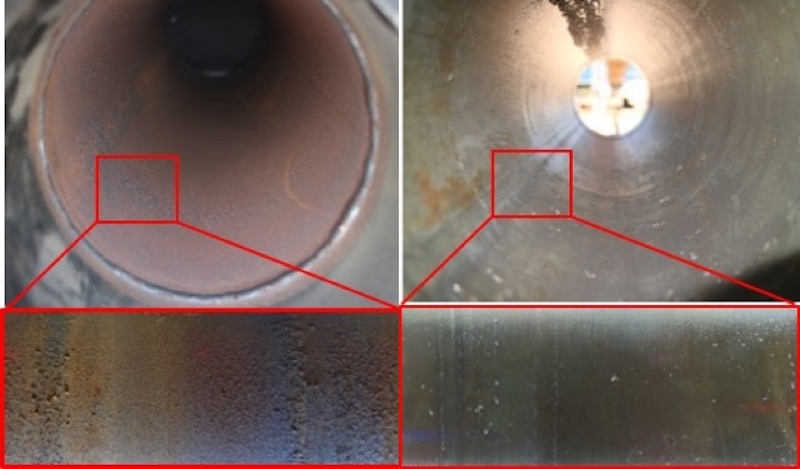

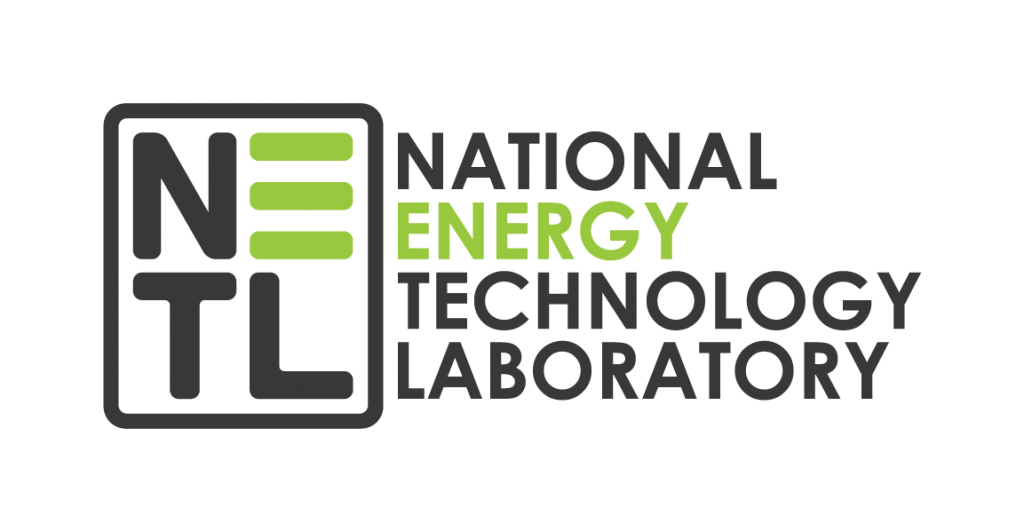

Omniphobic surface treatment videos
Hydrophilic & Hydrophobic Flow Behavior
Oceanit nanocomposite treatments were applied to sample pipes, demonstrating hydrophilic and hydrophobic flow behaviors. This video compares flow through an untreated pipe to both a 'water-loving' hydrophilic pipe and a 'water-repelling' hydrophobic pipe.
Omniphobic Wetting Behavior
Oceanit's omniphobic surface treatments create water- and oil-repellency on treated surfaces. These advanced nanocomposites create a low surface energy, hydrophobic, and oleophobic layer that imparts both chemical & corrosion resistance. In addition, the functionalized surface repels fouling.
Superhydrophobic Surface Behavior
Oceanit's superhydrophobic surface treatment creates an extreme water- and ice-repelling surface that prevents corrosion. The family of anti-ice coatings showed the lowest-ever adhesion strength rating by the Air Force Cold Regions Research and Engineering Laboratory (CRREL).
Contact Us
Would you like to learn more? Contact us to learn how DragX surface treatment can help you proactively manage risks, rehabilitate degrading lines, and keep your production flowing.
